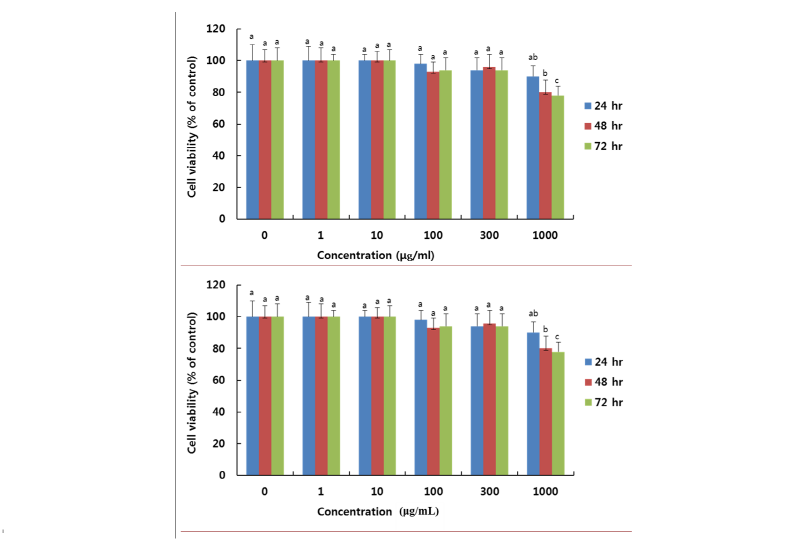Abstract
In the present study, we compared the effects of 50% ethanolic extracts of Chinese and Korean
Figures & Tables

Fig. 1. Cell viability of 3T3-L1 cells 0.5 mM isobutylmethylxanthine (IBMX), 1 μM dexamethasone, 1 μg/mL insulin treated by Korean ethanolic extract (KPE) at the indicated concentration (0, 1, 10, 100, 300 and 1000 μg/mL) for 24, 48 and 72 hr. Growth rate was assessed by MTT assay. Data are expressed as percent growth rate of cells cultured in the presence of extract, compared with untreated control cells, taken 100%. All values are mean ± SD. Letters with different superscripts are significantly different by ANOVA with Duncan’s multiple range test atp < 0.05 at each time point.


